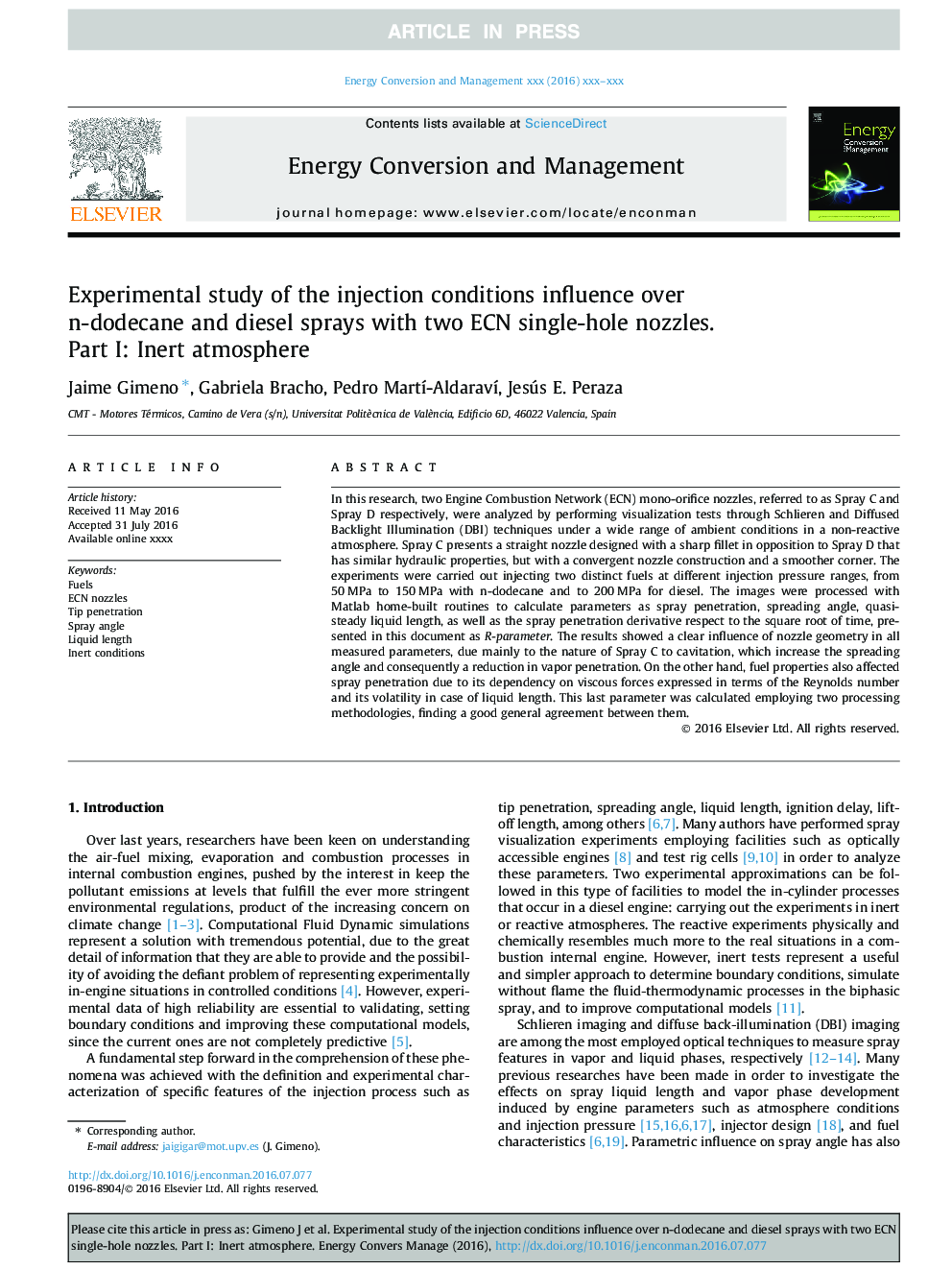| Article ID | Journal | Published Year | Pages | File Type |
|---|---|---|---|---|
| 7160091 | Energy Conversion and Management | 2016 | 11 Pages |
Abstract
In this research, two Engine Combustion Network (ECN) mono-orifice nozzles, referred to as Spray C and Spray D respectively, were analyzed by performing visualization tests through Schlieren and Diffused Backlight Illumination (DBI) techniques under a wide range of ambient conditions in a non-reactive atmosphere. Spray C presents a straight nozzle designed with a sharp fillet in opposition to Spray D that has similar hydraulic properties, but with a convergent nozzle construction and a smoother corner. The experiments were carried out injecting two distinct fuels at different injection pressure ranges, from 50Â MPa to 150Â MPa with n-dodecane and to 200Â MPa for diesel. The images were processed with Matlab home-built routines to calculate parameters as spray penetration, spreading angle, quasi-steady liquid length, as well as the spray penetration derivative respect to the square root of time, presented in this document as R-parameter. The results showed a clear influence of nozzle geometry in all measured parameters, due mainly to the nature of Spray C to cavitation, which increase the spreading angle and consequently a reduction in vapor penetration. On the other hand, fuel properties also affected spray penetration due to its dependency on viscous forces expressed in terms of the Reynolds number and its volatility in case of liquid length. This last parameter was calculated employing two processing methodologies, finding a good general agreement between them.
Keywords
Related Topics
Physical Sciences and Engineering
Energy
Energy (General)
Authors
Jaime Gimeno, Gabriela Bracho, Pedro MartÃ-AldaravÃ, Jesús E. Peraza,
